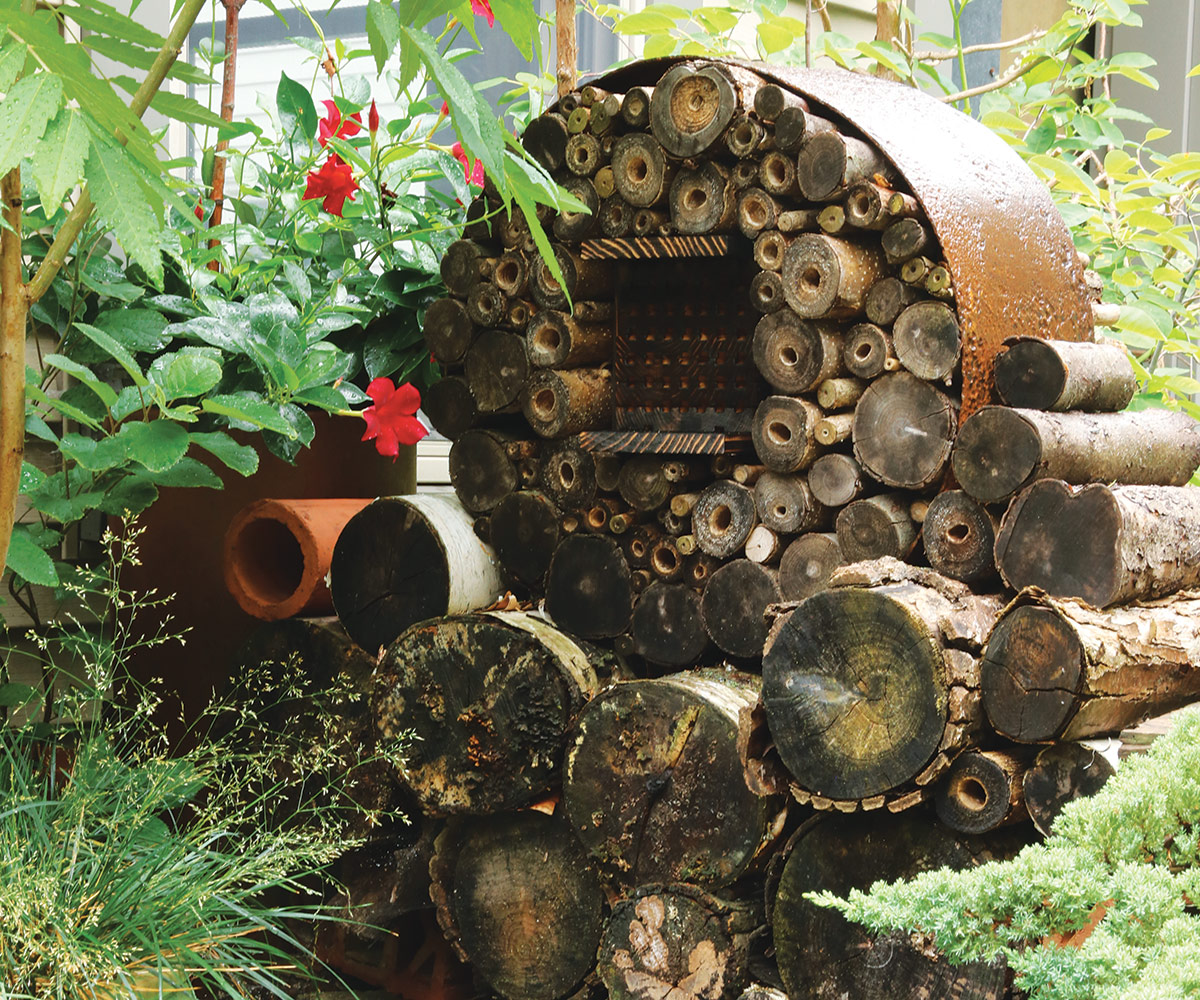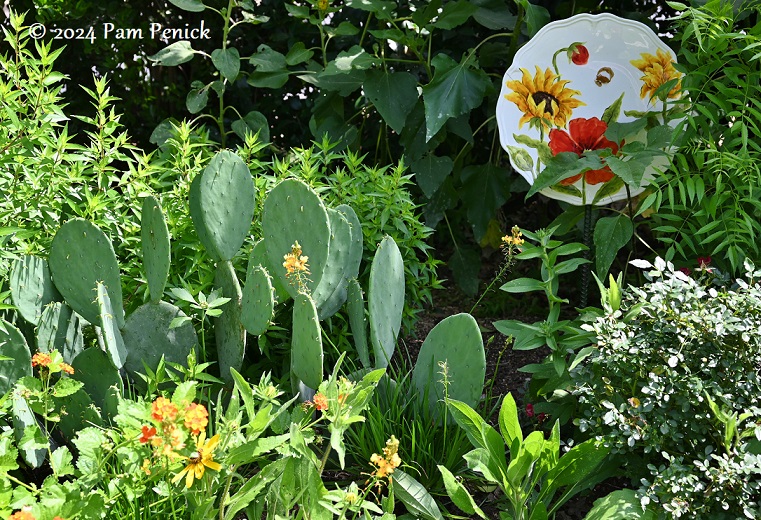For years I’ve heard the same refrain: You can’t have a good-looking garden that is also eco-friendly. It seems that many folks think native plants are too wild looking and that taking a lighter approach to garden cleanup or care will lead to a messy, unkempt landscape. I argue that there are small steps everyone can take to encourage greater biodiversity in their space, all while keeping it attractive.
1. Provide orderly frames
This step is less about being eco-friendly and more about reining in the wild look that sometimes comes with naturalistic gardens. Simple sculptures, stone pathways, a two-chair seating area, and neatly pruned evergreens such as the boxwood (Buxus cv., Zones 4–9) shown above are all important “cues of care,” to use a term coined by landscape architect Joan Nassauer. They are essential elements in letting others know that the look of the garden is deliberate and helping them accept the unconventional “messiness” of an eco-friendly garden.
2. Make your containers work harder
The pots and planters on my deck are not only for ornamental purposes; they also contain plants that provide food for bees, butterflies, and ruby-throated hummingbirds. In addition, I use the patio as a nursery of sorts. I often purchase small perennials that I plan to enjoy in pots for the season and then plant in the garden in fall. This reduces the number of energy-consumptive and expendable annuals I use.
3. Build some pollinator houses and log walls

You can supply all the pollen and nectar on the planet, but unless you provide a place for pollinators to shelter and overwinter, they won’t make your garden a home. I use commercially available reusable wooden trays and fill bricks with small cardboard tubes and hollow stems from garden perennials such as meadow rue or Joe Pye weed to create pollinator houses. I also create artistic wooden log walls in areas of the garden for the same purpose.
4. Leave the leaves

I utilize the whole leaves that fall from the trees within my garden for mulching, and I even add some leaves from neighbors’ trees that they rake to the curb. I’ve never had a problem with plants being unable to emerge in spring or being “smothered” to death by this naturalistic mulch approach.
5. Create a bird sanctuary

Native plants provide food for insects, and in turn those insects provide food for birds. Tucking garden debris behind plants at the perimeter of the garden provides habitat for many species of beetles, wasps, and other bird food sources. The numerous trees and shrubs within the landscape function as shelter to winged visitors, while birdhouses are key for cavity nesters. Tube feeders in winter and an open water source also encourage a healthy bird population.
Jeff Epping is the principal designer at Epping Design and Consulting and the former director of horticulture at Olbrich Botanical Gardens in Madison, Wisconsin.
Photos, except where noted: Danielle Sherry




